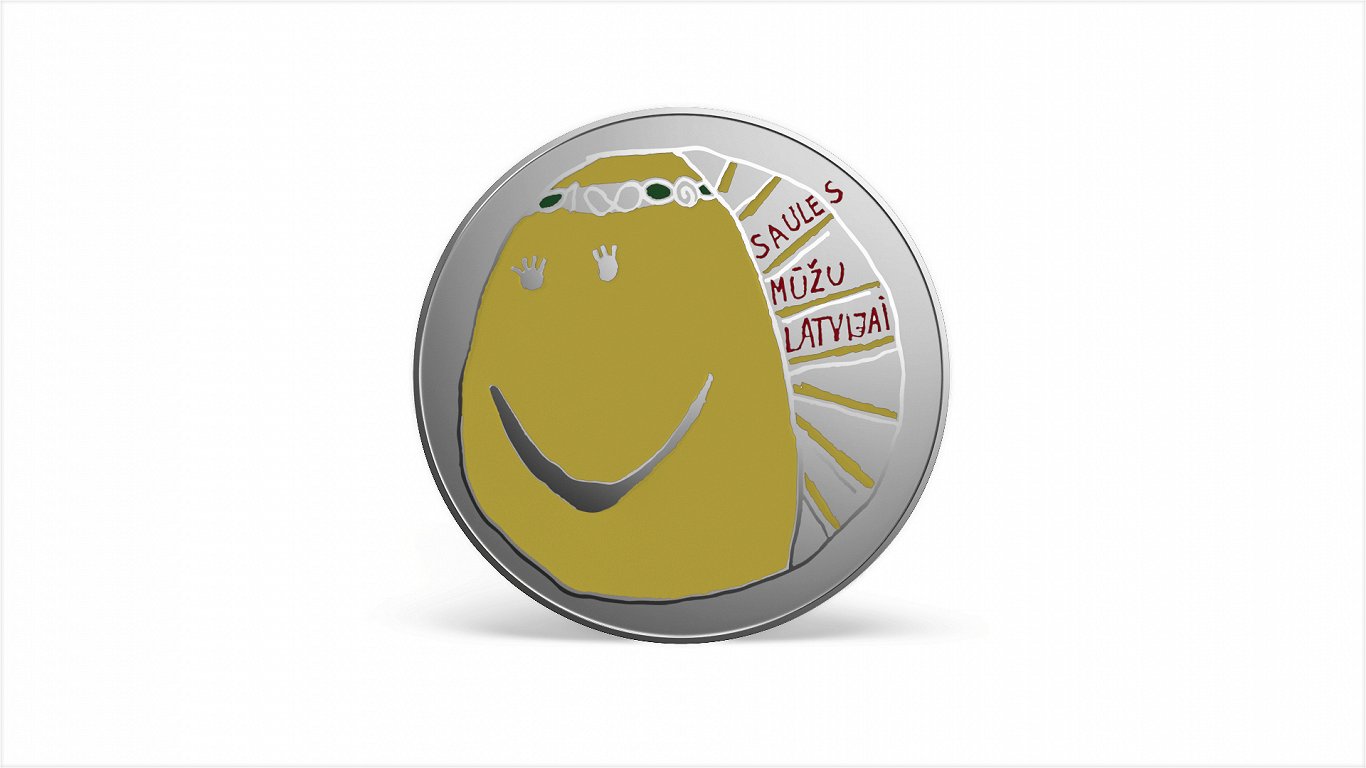Latvijas Banka is issuing a silver collector coin "My Latvia" on Friday, 9 March. The coin is dedicated to Latvia's centenary and one side was designed by 11-year old Elizabete Kandere from Grobiņa region. It features a smiling sun - just the thing to raise spirits in the central bank with governor Ilmārs Rimšēvičs being investigated by anti-corruption officers and embroiled in a major international scandal.
"It was her drawing of the Sun that was made into the design of the new coin because of its charming optimism and buoyancy," said the bank in an accompanying text. It sounds like just what is required!
The maximum mintage of the coin is limited to 4 000 and it costs 47.00 euro.
That is essentially the end of this brief news item. However, the central bank has included such mind-boggling additional texts that we could not resist sharing them below. Having given the government its thoughts on tax reform, healthcare reform and educational reform, it seem the venerable institution-cum-think-tank has now turned its attention to an investigation of juvenile psychology and creativity (see below).
Children's art has been recognised as a noteworthy factor of culture, indirectly related to the Industrial Revolution or Breakthrough of the 18th–19th centuries. Comparatively long chains of interconnections were then forming gradually, with technological, economic, political and social changes intermingling, the bourgeois life style emerging, education and creative and art activities expanding, and more spare time devoted to well-ordered raising of children.
The concept "children's drawing" was introduced in 1890 by Franz Čižek (1865–1946), an Austrian painter, art teacher and reformer of education of Check origin. He launched the Child Art Movement in Vienna, and in 1897 opened the Juvenile Art Class, which in 1906 was incorporated into the Arts and Crafts School (the Kunstgewerbeschule), but in 1910 became the Children's Art Class. Young creative personalities usually do not focus much on the tangible environment surrounding them; by means of colours and forms they create symbolic expressions of experienced emotions and ideas of their own.
Non-interference on behalf of adults, spontaneity of activities and possibly absolute independence are essential for kids' creativity. Children's art of the 20th century has managed to shatter the monopoly of academic and professional art, this being enhanced by the expansion of modernism and avant-garde movements which opened the doors to the world of relativism in art. Latvian contemporary paintings sometimes reveal trends of children's naïve style due to the connection of adult and children's creativity being mutual and reciprocal.
The artistic energy the coin emanates is meant to stir up sincere emotions, the sense of "one's own nest", the feeling of Latvia as the sole place under the Sun where it is cherished with heartfelt devotion even on a rainy day. May Latvia live and prosper forever!





























